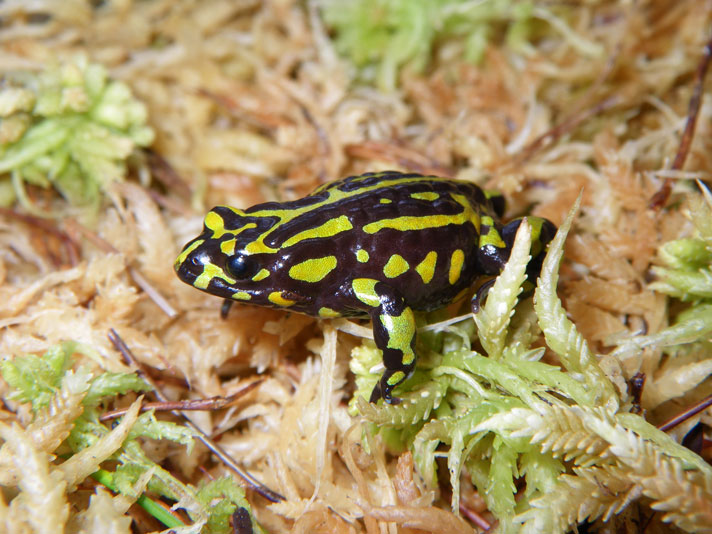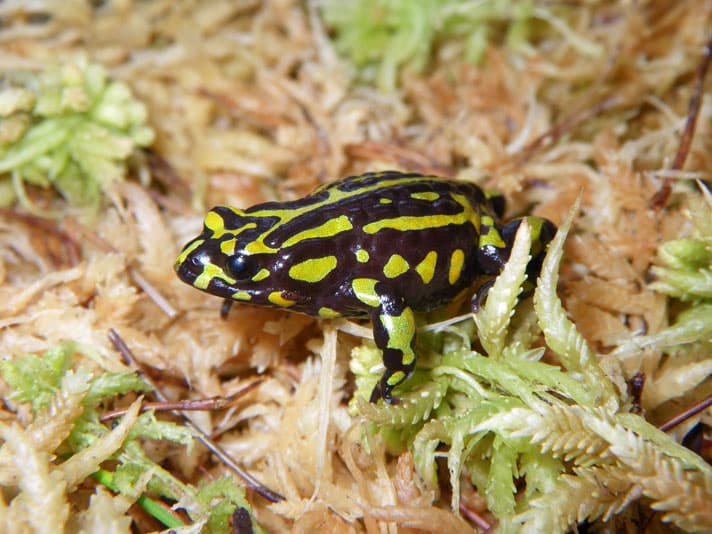They are the result of new breeding techniques and their release is a new approach to locating wild reintroduction sites.
Australia’s threatened Northern Corroboree frogs (Pseudophryne pengilleyi) are receiving a boost in wild populations thanks to a captive breeding program that resulted in the release of 30 frogs into semi-wild enclosures at Australia’s Tidbinbilla Nature Reserve. They are the result of new breeding techniques and their release is a new approach to locating wild reintroduction sites that negatively affect the chytrid fungus.

Adam Parsons/The University of Queensland
Thirty Northern Corroboree frogs were released into semi-wild enclosures at Australia’s Tidbinbilla Nature Reserve.
“Traditional frog captive breeding programs are resource intensive, usually using climate controlled conditions, and programs can be limited by space as well as resources,” Senior Ecologist Dr. Murray Evans of the Australian Capital Territory Government said in a statement released to the media.
Chytrid Fungus Information
Chytrid Fungus Threatens Frogs In Australia
Salt Shown To Clear Chytrid Fungus From Frogs
“Our new semi-wild enclosures will provide the frogs with more natural conditions and space, and will also allow more frogs to be bred and raised. One of the main objectives of the program is to breed frogs which can be released back into the wild, to boost wild populations that have declined due to the amphibian disease chytrid fungus, so being able to breed more frogs is a great advantage,” Evans said.
Those working with Northern Corroboree frogs are doing more to ensure healthy wild populations of the amphibians. They are hoping that these techniques give them the best chance to survive and breed in the wild.
“We are moving beyond focusing just on habitat and environmental conditions that suit Northern Corroboree frogs,” Dr. Ben Scheele, lead researcher from Australian National University said in a statement released by the university. “We are also investigating other aspects that can give the corroboree frogs an advantage and allow wild populations to better tolerate the impacts of chytrid fungus; one of these factors is better understanding how long frogs take to reach sexual maturity.
Scheele is hoping that areas will be found that are chytrid fungus unfriendly and have fewer frog species that can carry the disease. This will give the Northern Corroboree frogs a better chance at survival.
“Although the frogs are found high up in the mountains of Namadgi, we think warmer temperatures at lower sites could give the frogs a helping hand by enabling them to grow faster and breed sooner. We will survey lower elevation areas in Namadgi National Park with the aim of identifying potential new habitat for introductions of Corroboree frogs.”
“The overall objective is to ensure that the frogs bred at Tidbinbilla have the best chance of surviving and breeding in the wild to establish healthy wild populations,” said Dr. Scheele.



